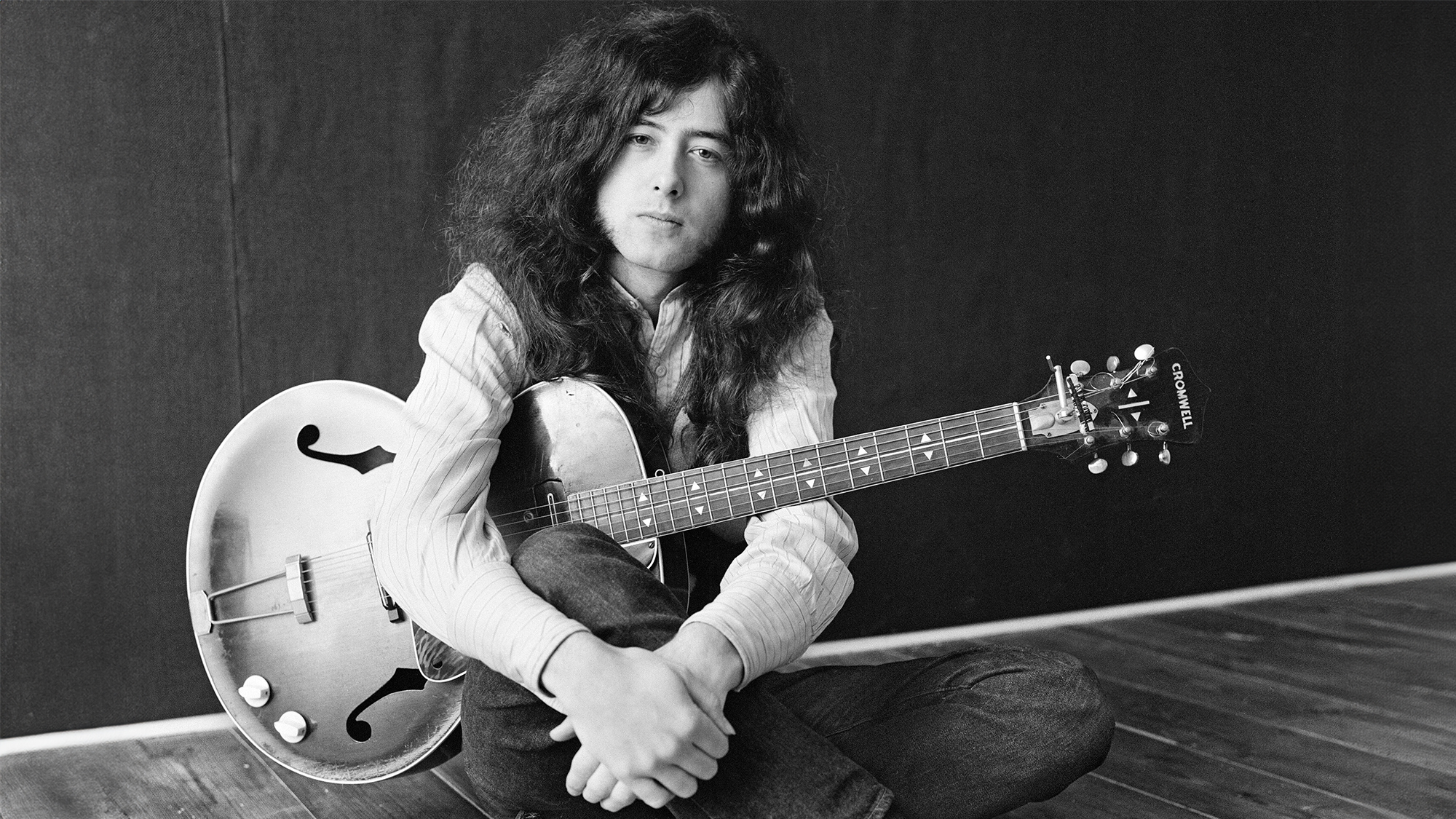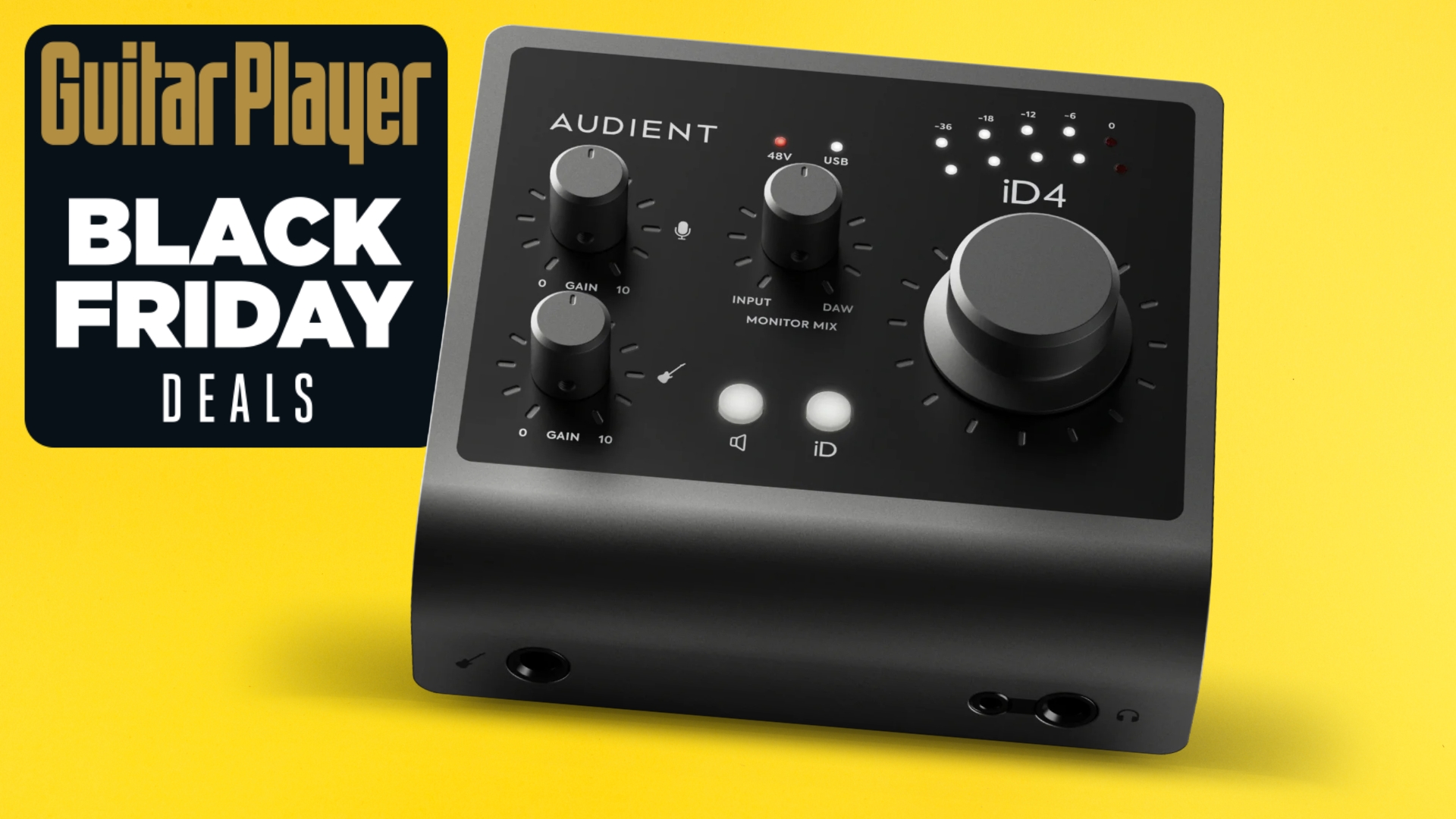I watched 'Becoming Led Zeppelin.' Here's how it shows acoustic guitar's vital role in Jimmy Page's heavy-metal musical vision
Even before they forged their union to supercharge guitar rock, Page and Robert Plant bonded over a folk singer.

If you’re a die-hard Zeppelin fan like me, you went to see Becoming Led Zeppelin at the iMax theater. You may also now appreciate that the film is now available on streaming services, allowing guitarists observe more closely the intimate details it reveals.
Personally, I can’t stop thinking about the huge role the acoustic guitar plays in Zeppelin’s origin story. These tales have been told before, but it’s endlessly interesting to hear them directly from the entire band — Jimmy Page, Robert Plant, John Paul Jones and John Bonham — while looking back on many previously unseen photos and film clips.
The key moment for me is the first time Plant comes to Page’s house and starts flipping through his albums.
Before the two even begin to cast the die for modern heavy metal, they bond over a folk singer.
“Babe, I’m Gonna Leave You”
Page recalls, “I played him the Joan Baez version of ‘Babe, I’m Gonna Leave You’ and said, ‘If you can sing that top line there, I’ve got an arrangement that goes with it. And it really dovetailed together. He just sang beautifully.”
Plant adds, “We knew something was in the air. I could feel this stuff around me. Jimmy’s guitar playing was just tremendous, amazing.”
All the latest guitar news, interviews, lessons, reviews, deals and more, direct to your inbox!
Led Zeppelin
As it turns out, guitars of every variety were always part of Page’s plan for the group’s debut album.
“I was going to throw everything I could at it,” the multidimensional guitarist says with a chuckle. “I was going to play acoustic guitar. I played pedal steel guitar, slide guitar, and electric guitar. I wanted to have so many different textures and moods on it that the whole album would totally arrest the listener and take them into a realm that they’d never been in before.”
As Page describes the material for the first Zeppelin album coming together at his home on the River Thames in Pangbourne, the film displays photos of him with his trusty Harmony Sovereign, the primary songwriting and recording acoustic that would eventually be heard on “Stairway to Heaven.”
According to the Met Museum, it’s a Sovereign H1260, serial number 9631111260. It’s worth noting that the contrasting acoustic delicacy and electric bombast were there on the first album in the form of “Babe” as well as “Your Time is Gonna Come.”
“Black Mountain Side”
The fact that Page decided to include a solo acoustic guitar piece on the band’s blistering debut demonstrates his conviction about a diverse guitar vision and for his dedication to the unplugged side of the equation. It’s often pointed out the Jeff Beck Group’s Truth album paved the way for Led Zeppelin.
While Beck did play a solo acoustic instrumental, he simply took a quick pass at the standard “Greensleeves,” whereas Page drew on his deep folk guitar affinity, specifically Bert Jansch’s version of “Black Water Side,” as well as his own appreciation for Eastern music to render “Black Mountain Side.”
“The guitar is not in a regular tuning on ‘Black Mountain Side,’ ” Page states about his use of DADGAD. “It’s very much like a sitar tuning.”
In addition to Page’s insights, the film displays amazing footage of him playing the piece on what appears to be a sunburst Gibson SJ-200 using all sorts of unique, Eastern-influenced improvisation. He employs a hybrid picking style — his advanced technique is quite precise — and throws in a nice behind-the-nut bend at the very end. Page must have felt this was the best footage of him playing the tune, even though it’s partially compromised and runs with a disclaimer, “Original master tape damaged.”
“Jimmy and John Paul were really at the top of their game,” Plant adds. “They’d played on so many diverse pieces of music that there was no where they couldn’t find themselves comfortably going. So that gave us a whole magnificent bunch of colors to play with.”
Led Zeppelin II
Becoming Led Zeppelin addresses the band’s first two albums, and the acoustic continues to play a large role in the latter. “Thank You” even includes a rare acoustic guitar solo. It’s particularly fascinating to hear the band members describe how the group first heard crushing tunes such as “Whole Lotta Love” and “What Is and What Should Never Be.”
“Jimmy would sit down with an acoustic guitar, and we’d work the songs out,” Jones explains.
Another voice that must be Bonham’s confirms, “Jimmy would sit down with an acoustic guitar, and we’d work the songs out.”
“I just really wanted to make sure that this album was really going to get everybody excited,” Page says. “I wanted it to be something that they hadn’t heard before with the acoustics, the electrics, the more radical and even avant-garde.”
Coda
The public largely considers Led Zeppelin the prototypical heavy metal band. Hipper folks are aware of the band’s acoustic side.
But there’s a bit of a misconception about Led Zeppelin III being the acoustic departure from the more electric first two albums. While the third may be the Zeppelin album where the acoustic guitar was primary rather than secondary in instances such as “Tangerine,” “Gallows Pole” and “That’s the Way,” Becoming Led Zeppelin clearly depicts Page starting out on acoustic playing skiffle music inspired by Lonnie Donegan, and it was in the folk arena where Page and Plant first found common ground.
Zeppelin’s ability to seamlessly incorporate the acoustic guitar into heavy tunes as well as to completely surrender to the acoustic realm on master strokes such as “The Battle of Evermore” with John Paul Jones switching to mandolin is what truly set them apart from all other hard rock groups in the end. And it was always there, right from the beginning.
Jimmy Leslie is the former editor of Gig magazine and has more than 20 years of experience writing stories and coordinating GP Presents events for Guitar Player including the past decade acting as Frets acoustic editor. He’s worked with myriad guitar greats spanning generations and styles including Carlos Santana, Jack White, Samantha Fish, Leo Kottke, Tommy Emmanuel, Kaki King and Julian Lage. Jimmy has a side hustle serving as soundtrack sensei at the cruising lifestyle publication Latitudes and Attitudes. See Leslie’s many Guitar Player- and Frets-related videos on his YouTube channel, dig his Allman Brothers tribute at allmondbrothers.com, and check out his acoustic/electric modern classic rock artistry at at spirithustler.com. Visit the hub of his many adventures at jimmyleslie.com



